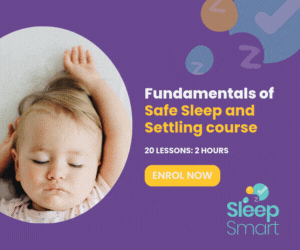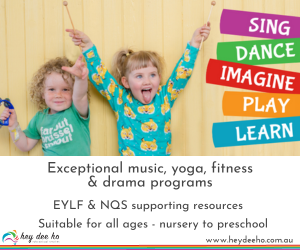Keeping your cool when working in ECEC

Have you ever felt like you’ve wanted to throw your hands in the air, stamp your feet or just scream out loud, when you’re working with children? Working with children in early childhood education and care (ECEC) settings can be a demanding and challenging role.
Stopping yourself from taking action on your angry or frustrated thoughts can come down to the power of the mind. When we are feeling calm, we are able to determine right from wrong, and control any primal urges we may have to fight, flight, freeze.
The ability to prevent ourselves from acting on instinct hinges on our capacity to think before we act. We know that brains can be re-wired, and trained to think differently, manage more effectively, and create more positive outcomes.
For those educators who sometimes struggle with managing impulsivity, or simply for those who want to feel less like screaming and more like smiling, The Sector contributor, Nic Russell, has shared some tips about how to “keep calm and carry on” – without the carry on!
Are you ready to take back the power of your mind and help manage intense feelings?
It’s impossible to completely remove stress from your day – particularly in the unpredictable world of ECEC. It is possible, however, to minimise the impact of stressors on your own wellbeing. Creating a low stress environment hinges on five preliminary concepts:
-
Children do not initially or intentionally set out to cause you grief. Know this. Believe this. Don’t take their behaviour personally.
-
There is always a reason why children are acting out – all behaviour, positive or negative, is communication Find out the “why” behind the behaviour.
-
Build relationships with all of the children in the group. When children have deep and connected relationships with their educators, they are more likely to respond to requests and to come to their educator for support in organising their feelings. How can you encourage everyone to work together?
-
Children are learning all about the world and how to manage their emotions. One of your roles is to help them understand and support their emotions. Understanding children’s emotional development can support educators to have more calm and compassionate responses.
-
Have a conversation with your co-educator/s (if applicable) about how to handle stressful moments in your working environment. Some strategies may include simply saying, ‘I need a break’ or “I’m feeling really frustrated right now’. Collaborate on what the next step is, so that it is done with the safety of the children in mind and for the wellbeing of yourself.
Once you have the preliminary concepts in place, consider these physical ideas to help you calm down –
- During the really stressful moments, stop what you are doing and take conscious breaths. Use the exhalation as a release. This will help to activate your parasympathetic nervous system, so you come into a more balanced state.
- Create your own go-to mantra to repeat quietly to yourself, when you are faced with challenges. You could try a phrase like ‘everything will be ok’ or ‘I am calm’ or ‘Just breathe’ or ‘It’s not their fault’.
- If it is safe to do so, and the children are supervised, go outside for a few moments to breathe in fresh air. Most rooms adjoin a yard, so if this is accessible to you, step out, take 5 deep purposeful breaths, ensuring you really breathe out long, on the exhale. Bring your full attention to the breath to give you a moment to refocus your attention. Notice the temperature of the air outside. What sounds can you hear? What do you see? This technique is called grounding, and it can be a useful tool for children also.
- Develop a yoga space in your room by laying out a couple of yoga mats, place pictures of yoga poses on the wall, in a quiet space or corner of the room. This space can be used by you and the children! When you are feeling any negative emotions, move it onto the mat. Yoga has many known benefits to help reduce stress, so take advantage of moving it out on the mat. You’ll be a wonderful role model for the children and the reason behind why you are doing the yoga could be used as a teachable moment about how to manage your feelings.
- Incorporate a mindfulness program in your room. This could involve acknowledgement, conversations, understanding and education, as well as mindful activities.
The role of the environment
Being creative in the way in which the environment is planned can be a positive step into integrating educator and child wellbeing. Environments which create a sense of calm and controlled emotions support not only educators, but also children.
When educators are able to use tools in their environment – such as a designated calm space, a yoga mat, or moving to outside – they are not only receiving the benefit of becoming calm, they are also modelling to the children how to regulate their emotions.
Thinking about how we can incorporate these pockets of wellbeing into our rooms, with mindfulness areas and yoga corners, is a perfect way to access tools anytime you or the children need it. Have you ever put music on to lift your spirits or create a sense of calm? This is an example of making an environmental change to impact on wellbeing.
Imagine redirecting a child who is experiencing heightened emotion to the yoga mat and joining in alongside them! Potentially a much better outcome than some common techniques to “manage behaviour” By working on our feelings side by side, we develop a deeper connection to one another, and this is especially true for children working alongside a trusted educator.
As a next step, picture the environment where you typically work with children. What is one small change you can make in that environment to support wellbeing for children and yourself?
Embedding Wellbeing
Keeping your cool when times are scary, frustrating, sad or emotional is an embedded practice. The process of becoming more mindful and embedding wellbeing into the program, is one which can happen through collaboration with your team, looking at aesthetics of your environment, setting up wellbeing areas and using techniques, such as intentional breathing; taking in a long deep breath and exhaling out through the mouth, three times.
Creating stress free environments requires a holistic approach, with calm and centred educators at the core. To that end, putting ourselves first as educators isn’t selfish, it is quite the opposite! We can only truly care for children if we are in the right frame of mind ourselves.
We owe it to the children and their families, to be the best we can be, and that includes taking responsibility for managing our own stress and learning to keep our cool.
If you would like to know more ways to keep your cool, visit Nic’s free Facebook Group The Peace Warriors for more ideas and support.
Popular

Quality
Jobs News
Workforce
When a staff update turns into a privacy breach
2024-07-19 00:57:43
by Contributed Content

Quality
Jobs News
Workforce
Research
Compassion Fatigue in Centre Managers and Directors: Addressing Burnout and Building Support Systems
2024-07-22 09:30:08
by Contributed Content

Provider
Workforce
Annual change in ECEC job ad volumes across all categories moves negative in June 2024
2024-07-21 13:27:38
by Jason Roberts


















